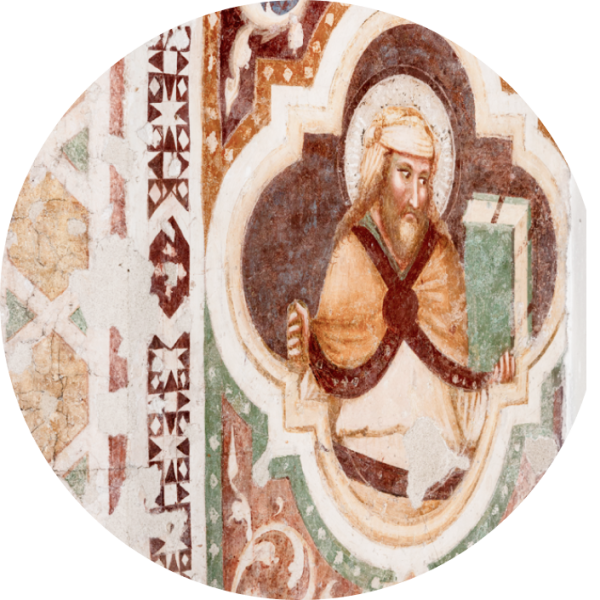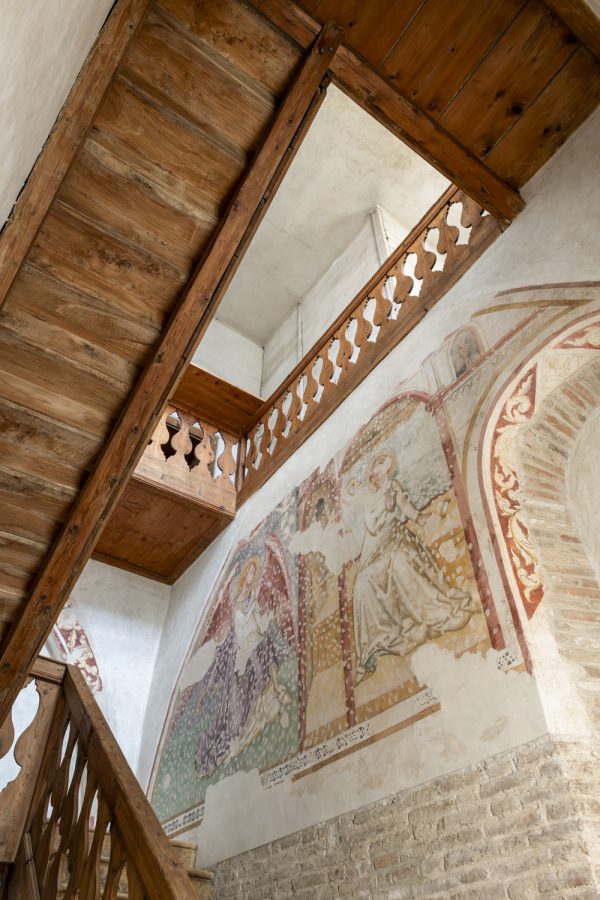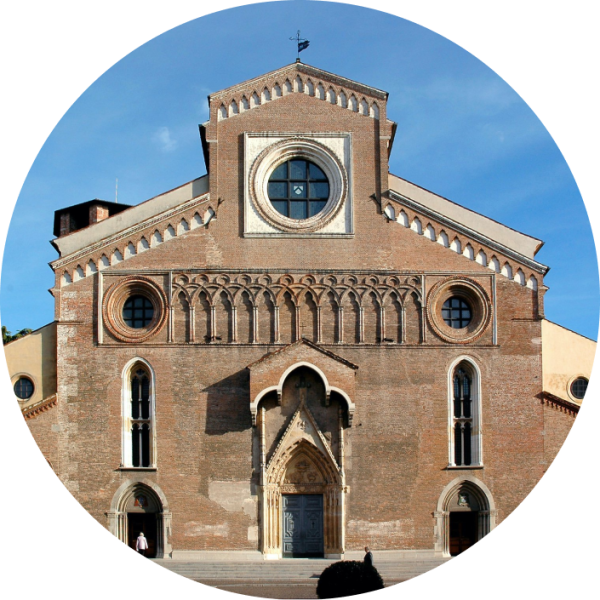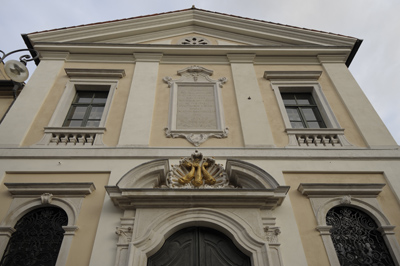The Church of Purity (Oratory)
The Church of Purity which is an annex of the Cathedral and faces its south wall, is one of the most admired buildings of the city. Through the centuries it has preserved its identity, created by great artists and craftsmen, commissioned by the last Patriarch of Aquileia, Daniele Dolfin.
The Church was erected on the former site of the “Udine theatre”, which belonged to the counts Mantica. Cardinal Dolfin considered inappropriate for such a mundane building theatre to be located so close to the Chapel of the Holy Sacrament.
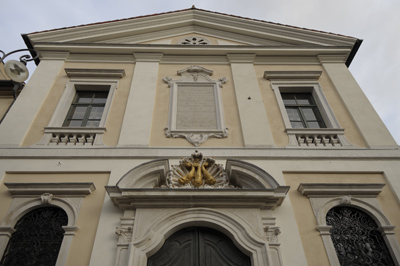
Therefore, on 6th April 1754, he bought the theatre for 3000 ducats, in order to convert it into a school for young girls and he soon established a foundation called “Le Grazie Delfine”. The Patriarch knew that local people would not take favorably to the theatre’s change of use, because it was the only such venue of its kind in the city, and therefore conducted transaction in secrecy. In 1757, structural modifications were made because the building was contrasted starkly with that of the neighbouring counts Arrigoni. In the meantime, the building was used as a chancery and for the cathedral chapter’s meetings. The construction works were entrusted to the “capo mastro murero” (architect) Luca Andreoli, and after three years they were completed on 28th Jun 1760.
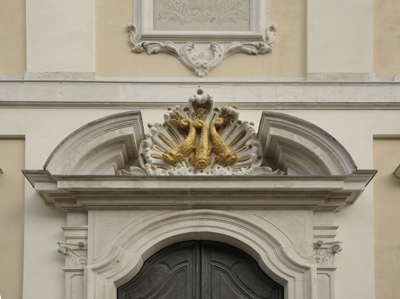
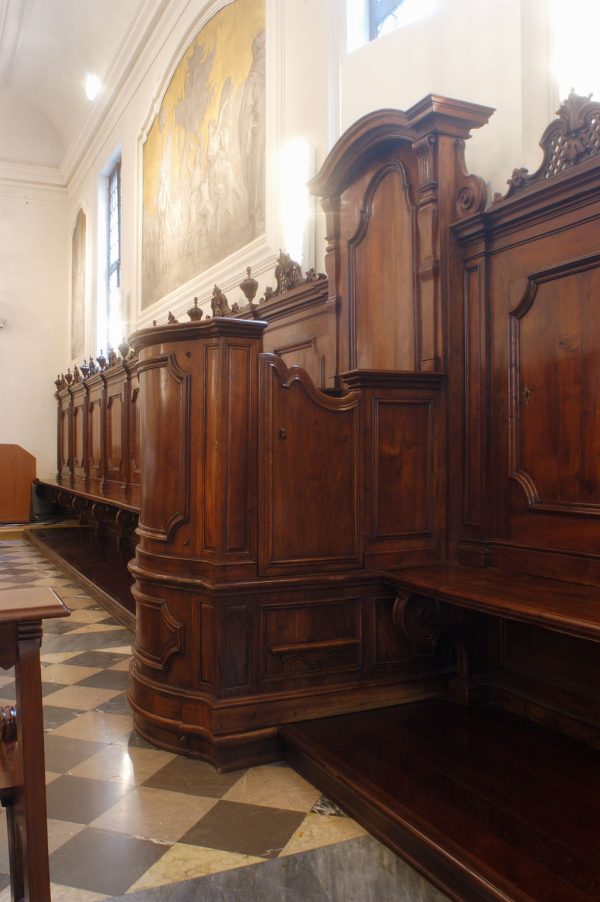
The Oratory was solemnly blessed, according to the Roman ritual, by the vicar general monsignor Francescco Belgrado and dedicated to the “Purità della Beate Vergine Maria” (Purity of the Blessed Virgin Mary), from which the name Oratorio della Purità derives. The following 1st July the Patriarch, assisted by the clergy, consecrated the altar, placing there relics of Pope Mark and St. Maria Jacobi.
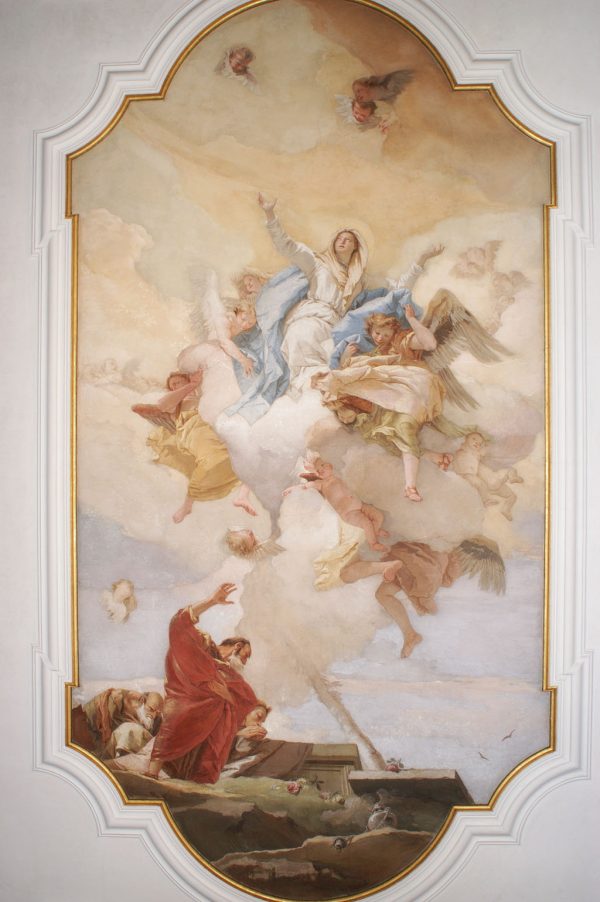
Almost certainly it was the master craftsman Luca Andreoli who planned the alterations, conceiving the design of the facade with the collaboration of the altar designers Giovanni and Giuseppe Mattiussi.
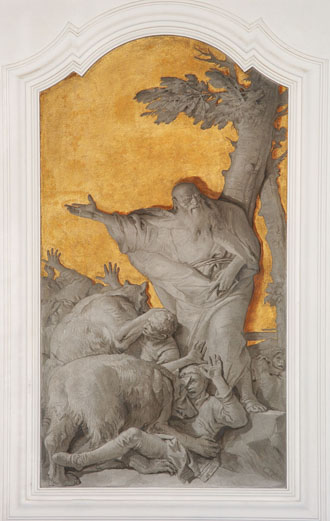
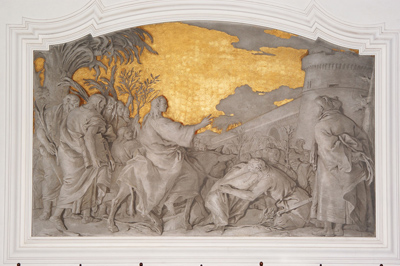
The architectural elements in Istrian stone, which adorn the façade, were carried out by Giuseppe Mattiussi, while the gilding of the cross on its tympanum together with the coat arms of the Patriarch, with the three dolphins above the entrance, are work of Pietro Lavariano. The polygonal leaded window glass was made by Cipriano Varelli of Cividale, while the wrought iron grating of the facade was the work of master ironsmith Domenico de Medici, who also made the altar lighting supports. Round the walls are walnut runners with small pillars, made at the same time as the wooden by the talented master craftsman Bartolo Marangone, who carried out the other carpentry work, including the surrounds the entrance door and the two small door which lead to the sacristy. The single altar and the architraves which nicely frame the altarpiece painted by Giovanni Battista Tiepolo were entrusted to the work of Giobatta Bottini of Portogruaro in 1757; the artist Francesco Cucchiaro painted the gloria di angeli above the altar, and in 1759 the two small stone tables on either side were commissioned to the sculptor Giovanni Mattiussi.
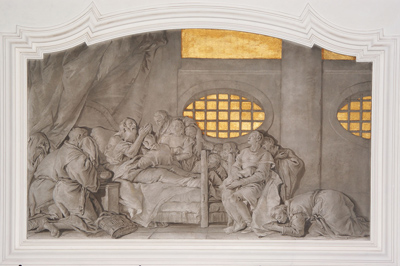
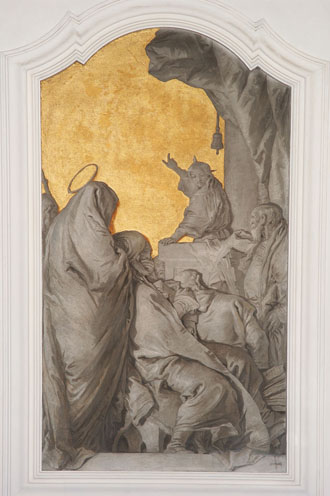
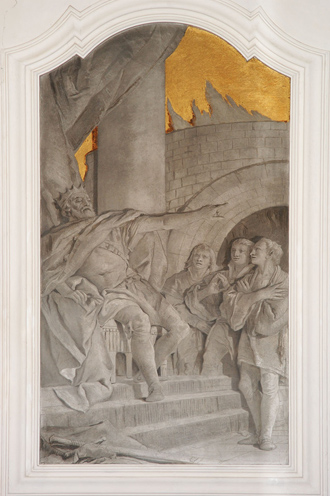
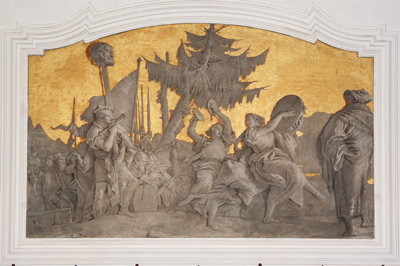
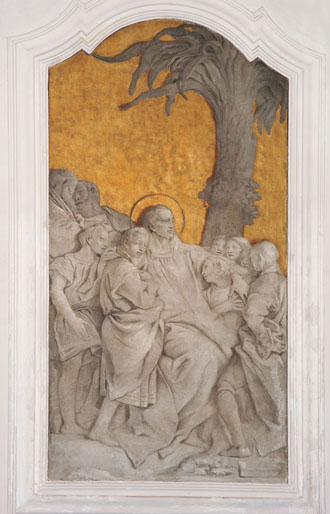
In 1798 of the Cathedral Chapter decided to move the Baptismal Font which was situated in the basement of the Baptismal Chapel to the Purità, this being the work of Giovanni di Biagio of Zuglio.
To record this event, memory of Patriarch Dolfin, the Chapter had painted a framed inscription.
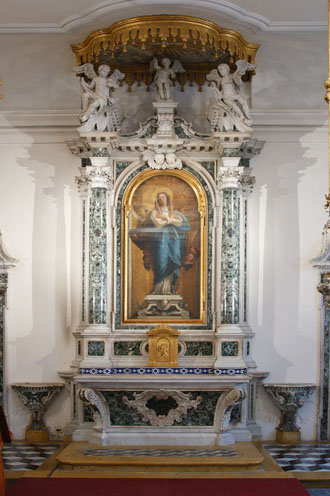

 English
English

